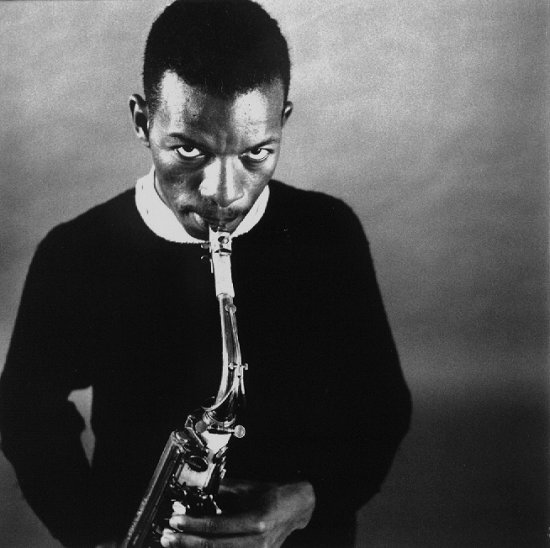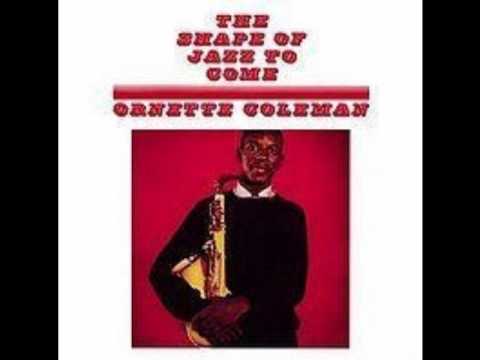"I think that those elements – light and sound – are beyond democratic. They’re into the creative part of life." Ornette Coleman
In this beautiful quote Ornette Coleman breaks music and art down to their essences of light and sound, speaking of them as liberating forces. By harnessing the creative part of life, he suggests, we can go beyond democracy to imagine new ways of being. In his music, Coleman illuminated beauty, gave voice to freedom. His passing at 85 marks the end of a remarkable life, one characterised by innovation and generosity of spirit.
Coleman was a giant of 20th century music, pushing jazz into new harmonic territory and reconceiving the way in which musicians improvised. This unique approach he called harmolodics. Yet there is nothing forbidding or overly cerebral about his music. From the seminal run of albums he recorded with his classic quartet between 1959 and 1960, to the free funk of Prime Time in the 1970s and 80s, Coleman’s music is wonderfully alive, open to all possibilities without losing sight of the life-affirming potential of melody and rhythm.
His 1959 statement of intent, The Shape Of Jazz To Come, may no longer carry the shock of the new, but its vitality and invention still astonishes.
Its great innovation was to dispense with the idea of chord changes as the basis for improvisation, allowing the musicians to improvise more freely around a tonal centre. The results are far from chaotic. A common approach is for Coleman and trumpeter Don Cherry to state the theme in rough unison, before taking off on improvisatory flights, their intersecting lines forming cubist angles over the indelible push and pull of Charlie Haden and Billy Higgins’ bass and drums. The music thus has an openness and freshness sometimes lacking from the more rigidly structure hard bop of the era.
It’s also full of melody. As Robert Wyatt put it, "he wrote such good tunes, didn’t he?" For all the sophistication of his concepts, many of Coleman’s tunes have a strong relationship with the blues and folk forms. Take 1959’s ‘Ramblin’, where Haden quotes a Cajun dance tune, or 1976’s joyous ‘Theme From A Symphony’: music that crackles with life, sounding both ancient and futuristic. The saxophonist Archie Shepp puts it well: "His tunes have about them the aura of a square dance telescoped through the barrel of a machine gun."
Coleman was never a fire-breathing reedsman in the vein of Albert Ayler or Pharaoh Sanders, but his playing is wonderfully expressive, capturing something of the human voice. As the drummer Shelly Manne put it, the sounds he produced were "like a person laughing and a person crying." Upon Coleman’s arrival in New York in the late 1950s, many jazz musicians, raised on the bebop stylings of Charlie Parker, didn’t know what to make of him. Who was this Texan interloper with the white plastic alto and unconventional style? Some would never come round to his way of doing things, but many other recognised his genius from the off.
The next great leap came in 1960 with Free Jazz, a long continuous piece for a double quartet which set the template for subsequent large ensemble blow-outs like John Coltrane’s Ascension and Peter Brotzmann’s Machine Gun. Less fierce than those landmarks, Free Jazz is nonetheless startling. Introducing a new concept for group improvisation, it bristles with invention: Eric Dolphy’s bass clarinet goose calls, Haden’s deep flamenco tones cushioning Scott LaFaro’s virtuosic bass runs.
In the early 60s, Coleman stopped performing for two years, teaching himself the trumpet and violin. In contrast to his controlled approach to saxophone, his violin playing was highly intuitive, focussed on texture and rhythm. This intuitive approach informs his inspirational 1966 album The Empty Foxhole, where Coleman plays violin, trumpet and saxophone while his 10-year-son Denardo mans the drum kit.
The mid-1960s saw Coleman’s music come into closer alignment with the free jazz of Albert Ayler, Cecil Taylor and John Coltrane. With his new trio of David Izenson on bass and Charles Moffet on drums, Coleman toured Europe, resulting in the classic At The Golden Circle albums on Blue Note. Later in the decade, he worked with a number of different configurations, often drafting in tenor saxophonist Dewey Redman to beef up the sound. The 1969 live album Crisis is hugely potent, with Haden a volcanic presence on bass.
The 1970s brought further innovations and stylistic shifts. 1972’s Skies Of America was a remarkable symphonic work, while 1971’s Science Fiction introduced elements of Indian classical music, poetry and electronic treatments. Coleman’s interest in non-western music led him to visit Morocco and the Master Musicians of Jajouka, a meeting documented on 1976’s Dancing In Your Head. His electric group Prime Time might be thought of as a response to jazz fusion, but their knotty arrangements and lopsided funk rhythms are very different to the groove-based jams of electric Miles or Headhunters. If anything, the angular dance rhythms of of 1976’s Dancing In Your Head anticipate The Slits’ post-punk.
Coleman continued to make great music throughout the 80s and 90s: Virgin Beauty with Prime Time and Jerry Garcia, Song X with Pat Metheny, the Naked Lunch soundtrack with Howard Shore. 2007’s Pultizer winning Sound Grammar is a fine example of Coleman’s late style, his saxophone tracing a path through the febrile harmolodic interplay of bassists Gregory Cohen and Tony Falanga.
I was lucky enough to catch Coleman’s Meltdown festival at the South Bank in 2009. Resplendent in one of his self-designed print suits, the great man communed with the Master Musicians of Jajouka and jammed with a surprisingly effective Flea, before joining Charlie Haden for a sublime duet of ‘Lonely Woman’. Goodbye Ornette: his beauty was a rare thing.
Remembering Ornette: A YouTube playlist



